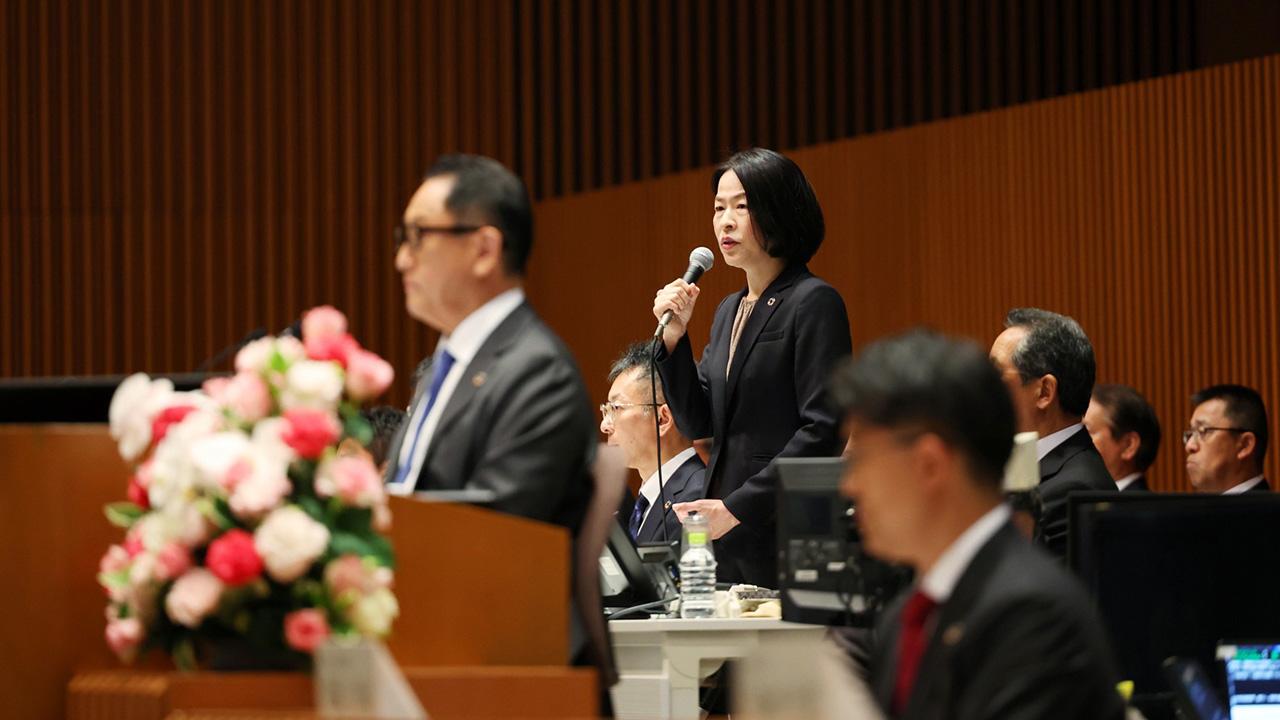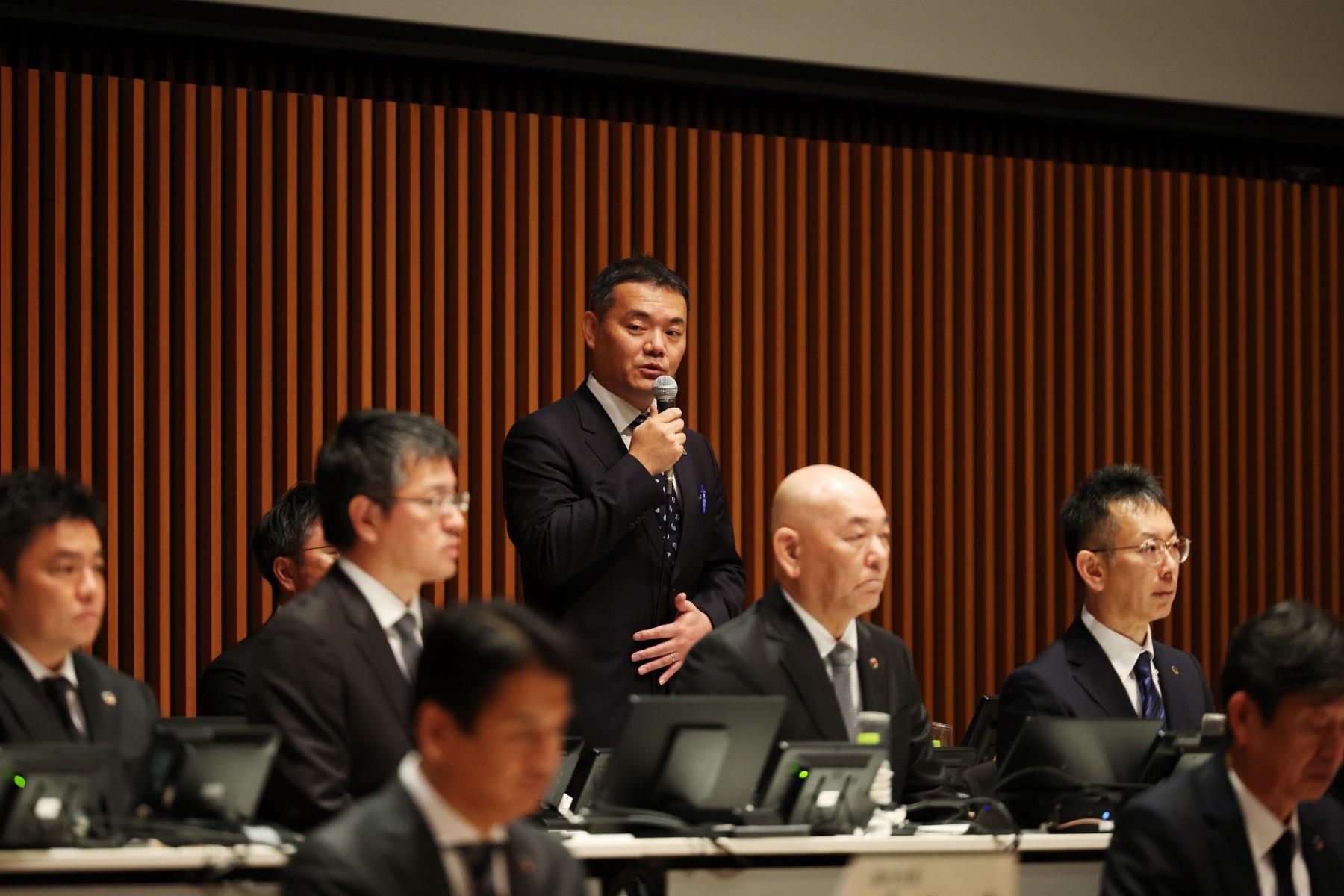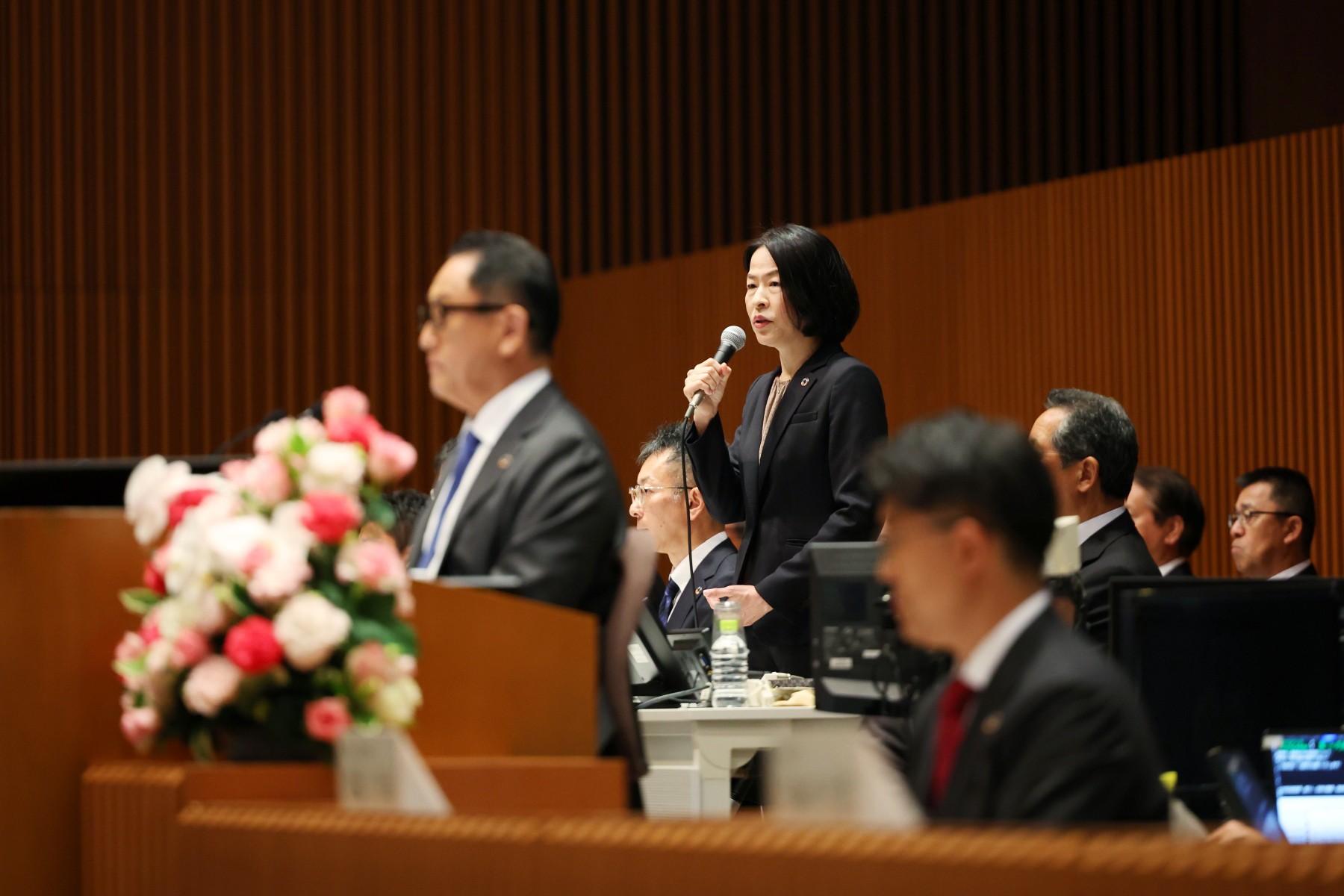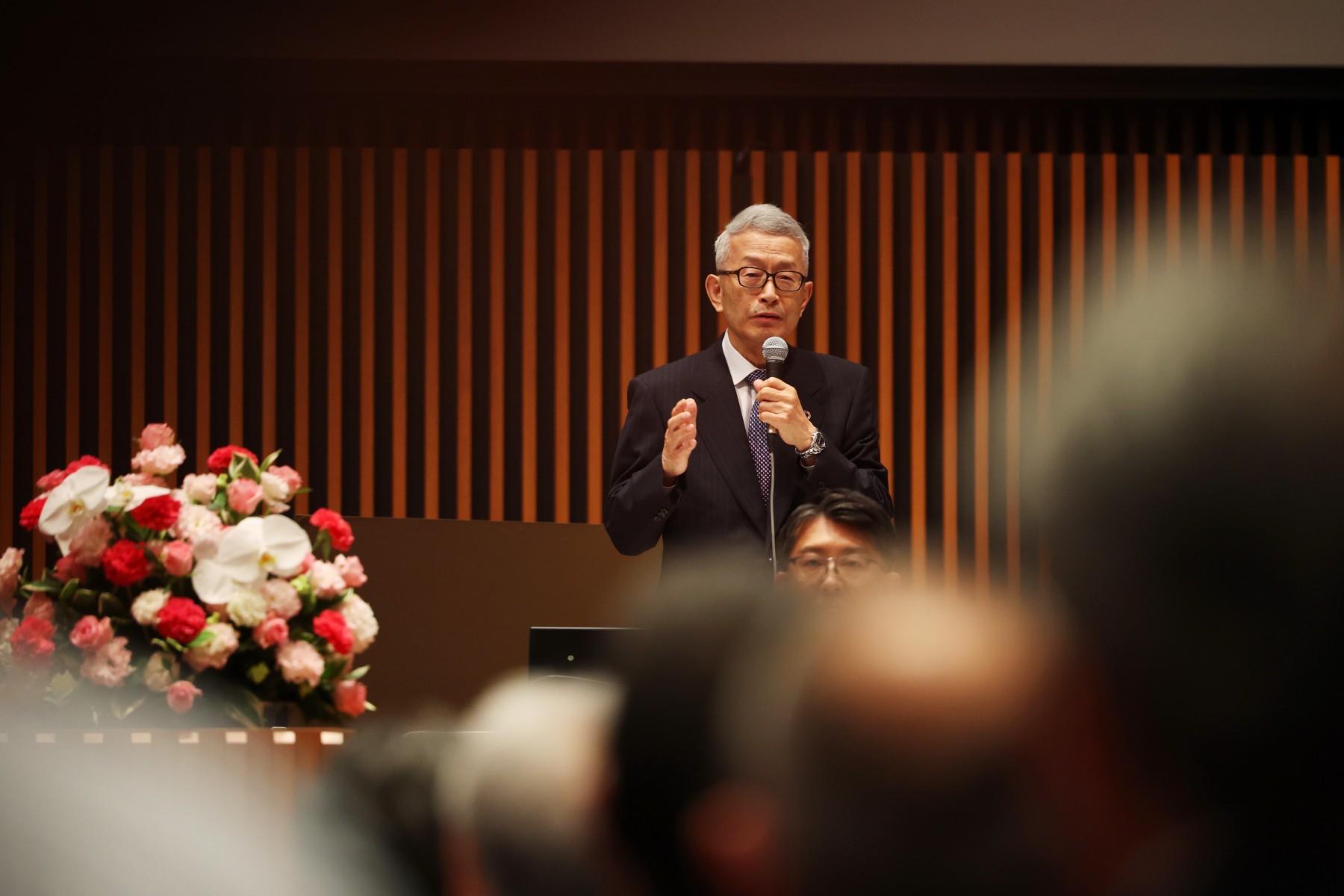
One item on the agenda at every shareholders' meeting is the election of directors. Over the past 14 years, their number has shrunk by two-thirds to just ten, thanks to the solitary efforts of Chairman Akio Toyoda.

At Toyota’s annual meeting, company leaders fielded 11 questions from shareholders. This time we look at two discussions about human resources and the executive structure.
These are both areas that Chairman Akio Toyoda fought long and hard to change.
Progress in promoting women
This year’s meeting saw 43 executives, auditors, chief officers, and other company leaders take the stage, of whom four were women.
Pointing to this imbalance, a shareholder asked about Toyota’s progress in promoting women to higher positions.
Responding to the comments, General Administration & Human Resources Group Chief Officer Takanori Azuma outlined the company’s efforts to develop diversity.
Chief Officer Azuma

I believe that having more diversity in management is extremely important.
Today, our proposed directors and auditors include four non-Japanese and two women, both one more than last year.
In the shunto spring negotiations this February, we gave a response on wages and bonuses in the first round of our talks with unions, rather than the usual fourth round.
Then in the second and third-round discussions, we focused on creating a workplace that allows diverse individuals to tackle challenges, time and again, without fear of failure.
In the case of women, we have greatly increased hiring over the past 14 years. The number has risen sharply by 40-50% in administrative office positions, just under 20% in engineering, and also roughly 20% in technical roles (genba workers in plants, etc.).
Next to speak was Senior Fellow Yumi Otsuka, who serves as Toyota’s Chief Sustainability Officer.
Encouraged by Chairman Toyoda to “share some words of encouragement, based on personal experience, for the women following in her footsteps,” Otsuka touched on how Toyota’s systems and culture have changed.
Senior Fellow Otsuka

I joined the company some 30 years ago as one of the first on the administrative career track. At the time, it was a given that I would be the only woman at any meeting.
Then from around 2002, we began to focus on diversity by assisting all employees, not only women, with balancing work and childrearing. This included establishing daycare facilities and a teleworking system, which was then quite rare, as well as providing mentors to support women’s career development.
With these efforts, more women have come into important roles.
The chairman has also sought to empower all employees by transforming how we think about and practice HR, and the very systems themselves. I believe that people’s attitudes have changed tremendously.
Since everyone is diverse and different, we should embrace that individuality, and each contribute in our own way. Gradually, this has become the prevailing mindset.
For myself and other women, career hires, and the younger generation, I feel that such perspectives give courage and confidence, making it easier to speak out for company reform.
Recently, the rate of male childcare leave has reached 40%, with the average length also increasing to just under two months. We see this as more proof of the growing acceptance of diverse ways of working and contributing.
Our mission is to “produce happiness for all.” Not uniform happiness, but diverse happiness for diverse individuals. To accomplish this, it’s vital that we embody that diversity ourselves, and create a workplace where everyone can flourish.
Why reduce the number of directors?
One item on the agenda at every shareholders' meeting is the election of directors. This year saw the appointment of 10 board members, including four outside directors—a smaller number than most companies of Toyota’s size.
The board’s composition, however, had changed over the course of Akio’s presidency.
When a shareholder questioned the purpose of these changes and their impact on management, General Administration & Human Resources Group Chief Officer Azuma again took the microphone.
Chief Officer Azuma
Today, we have a team of around 40 people up here, about the same number that was on stage when Akio Toyoda chaired his first general meeting in 2010. However, the composition has changed.
Back then, the board of directors had nearly 30 members, while today we are proposing ten. The list of directors, operating officers, and auditors ran to more than 80 names. Currently, it is around 20.
What’s more, 14 years ago there were some 60 former executives serving as advisors and senior advisors, whereas now we have none.
In total, when President Toyoda took office there were some 150 elder executive alumni.
Of the roughly 40 people up here today, nearly a dozen are (non-executive) genba leaders, including the president and chief officers such as myself.
Azuma provided figures to explain Toyota’s slimmed-down management structure.
Next to speak was Banto Koji Kobayashi, who has worked alongside Akio for nearly 30 years, twice as his superior.
He described the decisions and struggles behind Akio’s executive structure reforms.
Banto Kobayashi

Before the chairman became president, individual divisions such as engineering and production were powerful, with their heads serving as vice presidents. It was a time when work was centered on functions.
The work was steadily increasing, with (production and sales) volumes rising by around 500,000 cars a year, and the number of executive posts grew accordingly.
When a vice president or higher (executive) retired, they received permanent titles under a system of advisors and senior advisors.
In a sense, the functions were more like factions. As they grew more powerful, carmaking and company decisions would be optimized for individual divisions and functions.
Employees and executives alike were mindful of their seniors serving as advisors, some of whom interfered in operations. In these conditions, it was very difficult to get things done.
Akio saw that this was not conducive to making ever-better cars, and was determined to change the system during his presidency.
At the time, he was only 57-58, surrounded by more senior members. To eliminate the (advisor) system created by those senior figures, along with their vested interests, he would have to openly oppose them.
Naturally, his plans met fierce opposition, both from the Honorary Chairman Shoichiro Toyoda and other alumni. His fellow executives were too afraid to get involved.
Undaunted, he persevered alone, approaching everyone individually to explain the situation.
Observing him, I felt that he continued to fight this bitter, solitary battle, because he was determined to pass on the baton to the next generation.
“I want my generation to be the last to spend time on the past.”
“We need to become a company that operates based on ‘roles’ rather than ‘titles.’”
This is what Akio had continued to fight for, determined that others would not have to face the same hardships he did. Kobayashi teared up as he voiced the chairman’s wishes for the next generation.

